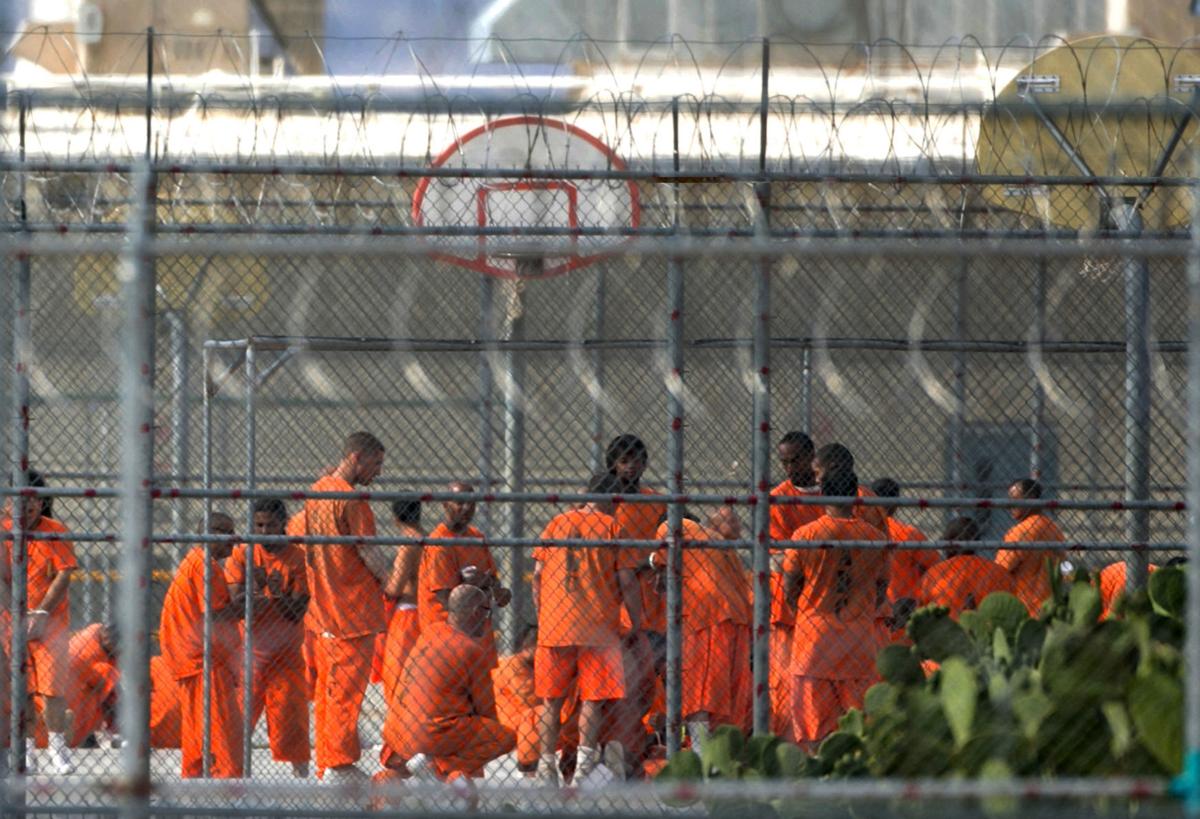PHOENIX — A measure that may be headed for the ballot asks Arizona voters if they’re ready to overturn some mandatory sentencing laws adopted decades ago.
The initiative, if approved in November, would carve an exception into laws that limit the discretion that judges have in deciding how long someone should be imprisoned.
Those minimum and maximum ranges would remain in state law.
But the initiative would empower judges to deviate “in the interest of justice” in what are defined as “non-dangerous” offenses, even to the point of suspending sentences and placing people on probation. And they could consider input from victims, family members and experts, as well as other factors related to the circumstances of the case.
The same measure, dubbed the “Second Chances, Rehabilitation and Public Safety Act,” also would allow inmates sentenced for nondangerous offenses to be released after serving 50% of their time. Now the minimum is 85%.
And it would end the practice of some prosecutors of “stacking” charges in a way that allows someone to be sentenced as a repeat offender even if they have no prior convictions.
Backers said they submitted 397,291 signatures. At least 237,645 need to be found valid to qualify for the ballot.
The measure is drawing fire from Pima County Attorney Barbara LaWall.
“Changing the sentencing code by utilizing an initiative such as this provides absolutely no opportunity for any informed hearings, discussion, expert testimony from any affected parties and — the absolutely worst part — is that the victims have no voice whatsoever,” she said. And she said there are specific flaws.
The state’s policies on incarceration date back to 1978, when lawmakers voted to impose mandatory prison terms for certain crimes.
And in 1993 they approved the “truth in sentencing” law, which says criminals must serve at least 85% of their term before being eligible for release. That came after complaints that even when judges were imposing longer terms that inmates were getting out after serving only a fraction.
Attorney Roopali Desai, who is involved with the initiative, said the proposed changes are not all that radical.
“What we’re doing is we’re returning to judges the discretion that we all believe they ought to have,” she said.
“That’s why they’re judges. That’s why we have them on the court in the first place.”
Anyway, she said, this is not a radical change.
Desai said existing law already provides for a range of sentences in given circumstances.
For example, theft of property worth between $4,000 and $35,000 is a Class 3 felony.
Under current law, a judge can impose a prison term of just two years if there are mitigating circumstances. The presumptive prison term is 3½ years, with a maximum term of seven years.
What this proposal would do, Desai said, is give judges more options when the facts “don’t fit the circumstances.”
But LaWall warned there are drawbacks to all that.
“The provisions in this initiative will result in extreme disproportionality in sentencing, identical to what existed prior to 1978,” she said. And that, LaWall said, will allow for the bias of judges to show.
“There are very liberal judges who will now have discretion if this passes to sentence repeat offenders to probation instead of prison,” she said. “On the other hand, other judges will sentence these same offenders to many more years than what the sentencing ranges currently provide.”
And she said there’s something else: the possibility of race becoming a factor.
LaWall said that prior to the sentencing guidelines, educated white offenders routinely were sentenced to probation while individuals of color charged with the same offense often were sent to prison.
“These disparities may not have been intentional,” she said. “But I saw them occur on a regular basis nevertheless.”
The “stacking” provision in the initiative relates to the fact that prosecutors can seek longer sentences when someone is a repeat offender. But this seeks to change the definition of that.
For example, take the case of an individual who committed three burglaries on three successive days. Current law allows prosecutors to claim the first two as prior offenses to argue for a longer prison term as a repeat offender.
The initiative would allow defendants to be classified as a repeat offenders only if they were involved in prior burglaries for which they were tried and convicted.
LaWall said what that also means is that there is no increased mandatory sentence for people who commit multiple crimes “before the police catch up with them.” In fact, she said, there’s no enhanced penalty for those people who continue to commit crimes while out on bail or awaiting sentencing.
“A person who burglarizes 30 homes in a month is still eligible for probation so long as they keep committing these crimes before they are sentenced,” she said.
State lawmakers actually voted for that change in 2019 only to have it vetoed by Gov. Doug Ducey, who said he was concerned about “the unintended consequences that may arise from this legislation and the effect these changes would have on victims.”
The other key provision would allow inmates to be released after serving half their time instead of 85%. Desai said all the conditions for earning early release credits in the current programs would remain, including good behavior and participation in educational, drug treatment and rehabilitative programs.
There is some precedent for the change the initiative is seeking. Last year, lawmakers approved a measure permitting inmates who had been convicted solely of drug offense to seek release after serving only 70% of their time.





